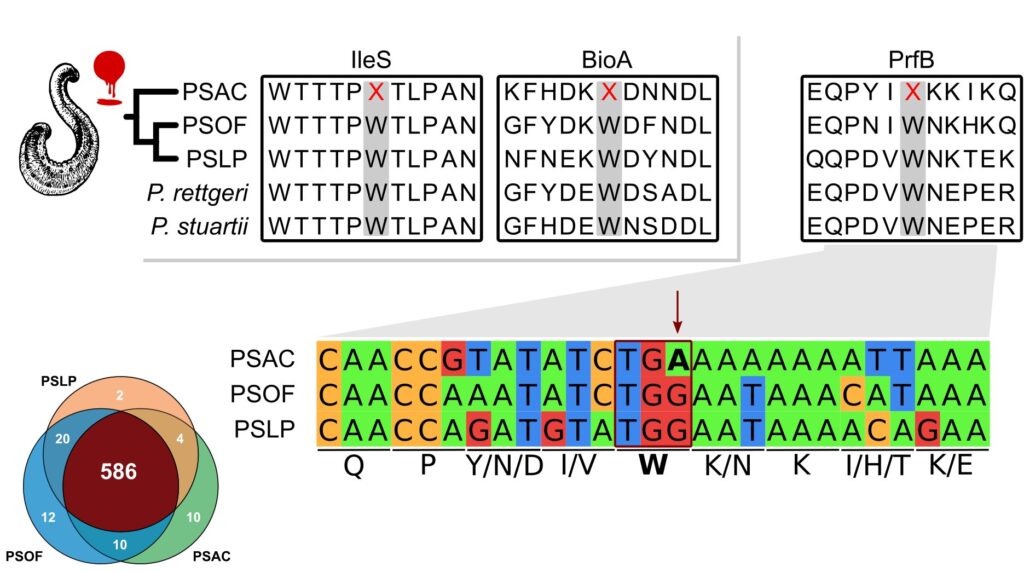
Obligate vertically-transmitted endosymbionts are weird… Given their particular lifestyle and mode of inheritance, they have evolved all sorts of particular genomic features (small to tiny genomes, biased nucleotide composition, among others). These sort of weird critters not only live inside insects, but can be found widely spread across invertebrates with a nutrient restricted diet. Strict blood-feeding leeches have evolved these sort of symbionts, but little is known about their nature, identity and genomics. Thus, we set to further explore the Providencia–Haementeria symbiosis by expanding the genomic knowledge of this symbiont lineage.
In this latest work, we found that similarly to other long-term vertically transmitted symbionts, the Providencia siddallii ancestor evolved a small gene-dense mobile element-free genome (so far, pretty standard, right???). Most surprisingly, we found that a “rare” genetic code reassignment (11->4) evolved in the symbiont lineage associated to the mexican leech H. acuecueyetzin (fun fact! the specific epithet means “leech” in Nahuatl). This reassignment means that the STOP codon ‘UGA’ is now coding for tryptophan! Moreover, features form the symbiont genomes suggest an early stage of reassignment and an ancestral propensity for the P. siddallii bacteria to undergo such a reassignment, e.g. the ancestral accumulation of ‘UGA’ codons in essential genes.
This work was a great collaboration with my friends and long-lived colleagues Dr. Alejandro Oceguera Figueroa (Biology Institute, UNAM, Mexico) and Dr. Sebastian Kvist (Natural History Museum, Stockholm, Sweeden).
Reference: 10.1101/2023.03.27.534433
*Version of record: 10.1093/gbe/evad164
 Biology and Evolution of Symbiosis (BESymb)
Biology and Evolution of Symbiosis (BESymb)